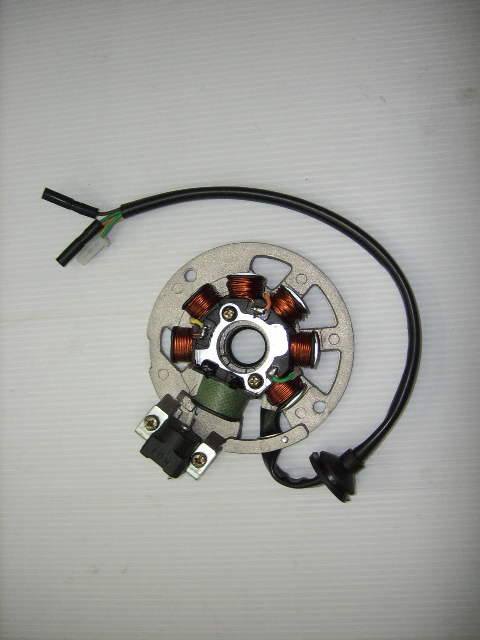ATV Engine Magneto
The Mysterious Magneto
And you thought he was just the villain in X-Men

Dear ATV Connection:
I’m not very mechanically inclined but I’ve been tinkering with small engine repair in my spare time and have begun wondering why ATV’s, with their primarily 4-stroke small-bore engines, lack such items as coils or magnetos.
The simple answer is that a vast majority of ATVs being produced today have an onboard battery which supplies voltage for electric starting, fuel injection, exterior lighting and gauge operation, and yes, digital ignition duties as well. But this wasn’t always the case.
In fact a majority of the early 3 and 4-wheelers imported to the United States in the late 1970’s/ early 1980s lacked batteries entirely and, like the small engines of lawn mowers and weed whackers, depended upon a magneto to convert the engine’s internal motion (from the flywheel) into electrical current.
The scientific principle behind the magneto (sometimes called a generator) is surprisingly simple: Sweep a length of copper wire past a magnet and an electrical current appears within the wire. The quicker the sweep, the more powerful the current produced.
On each flywheel rotation, an electromagnetic field is built up in the coils on the armature. A cam on the electric unit creates contact with the armature, disrupting the field and creating electrical voltage in the primary coil. The cam then breaks contact with the armature and the electromagnetic field regenerates for a new pulse of electricity. Since electricity travels at the speed of light, the entire process takes mere factions of a second from beginning to end.
Early ATVs adopted magnetos to power their head and tail lights as, again, a lack of onboard battery power meant these electrical systems could be powered only when the engine was running. Since the magneto’s output depended entirely on the RPM of the engine, voltage regulators (coils) could be used to step up or decrease the voltage reaching the delicate bulbs (but even still, lights shined their brightest when RPMs were at their highest).
Even today, while a majority of the work-oriented quads and some of the performance models come equipped with batteries for electric starting & fuel injection duties, many machines still make use of the tried and true magneto as a means of voltage induction.
This is especially true of machines that make use of both electric starting with manual backup methods such as recoil or kick start (meaning the electrical system is designed to continue functioning even if the battery itself is dead). Additionally, magnetos continue to be near universal in piston aircraft due to their reliability and the convenience of electrical production independent of a fickle and often heavy battery.
